Which is the Best GPU for Deep Learning in 2024
Looking for the best GPU for deep learning? Find top options and reviews on our blog to enhance your machine learning projects.
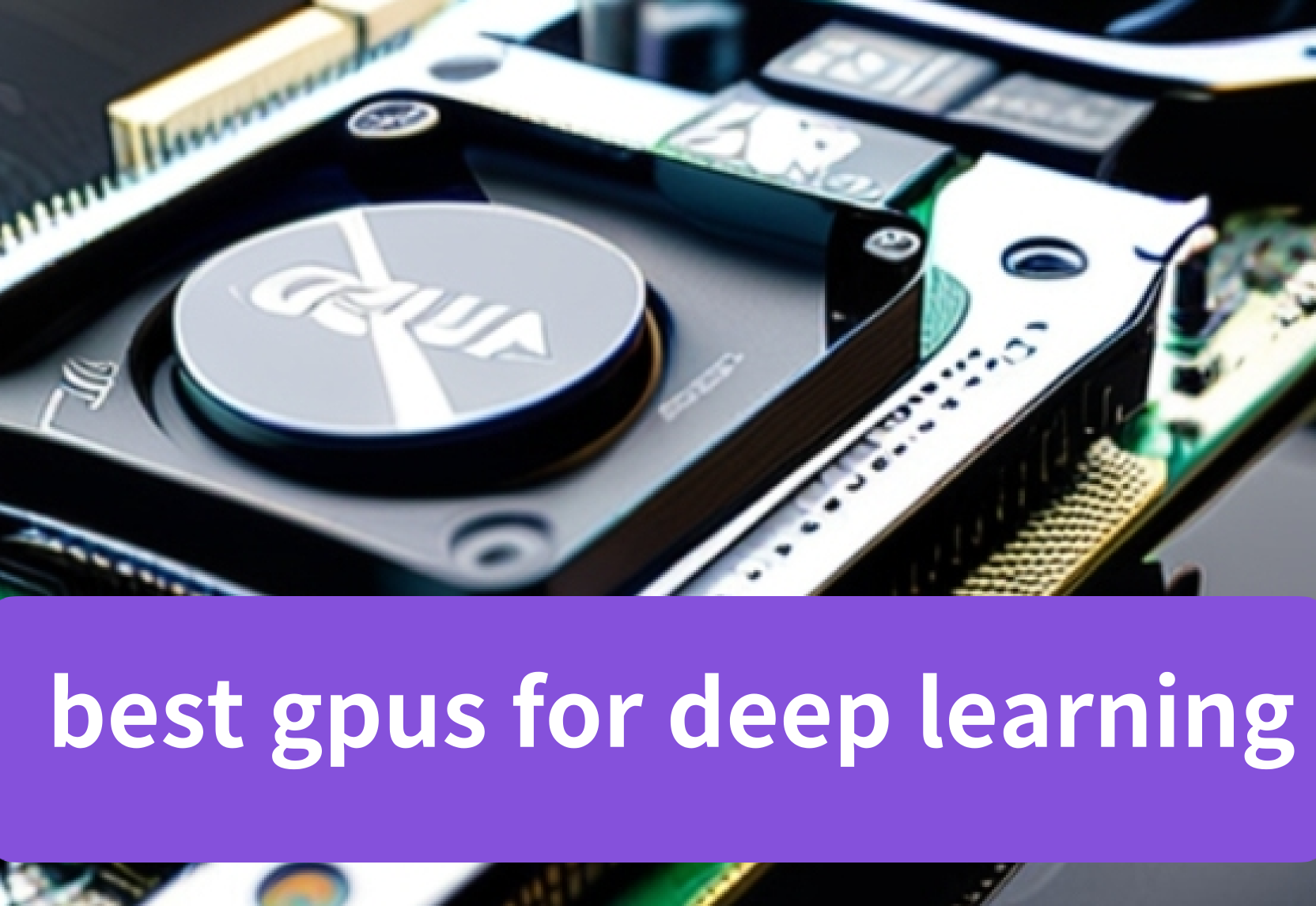
Introduction
Deep learning is a field with intense computational requirements, and your choice of GPU will fundamentally determine your deep learning experience. But what features are important if you want to buy a new GPU? GPU RAM, cores, tensor cores, caches? How to make a cost-efficient choice?
Today, we will delve into these questions, tackle common misconceptions, give you an intuitive understanding of how to think about GPUs, and will lend you advice. And this blog post is designed to give you different levels of understanding of GPUs and the new Ampere series GPUs from NVIDIA, such as NVIDIA RTX4090, A6000, A100 and so on.
Understanding the Deep Learning
What is deep learning
Deep learning is a subset of machine learning that focuses on algorithms inspired by the structure and function of the brain, known as artificial neural networks. It involves training models with multiple layers (hence "deep") to recognize patterns and make decisions based on vast amounts of data.
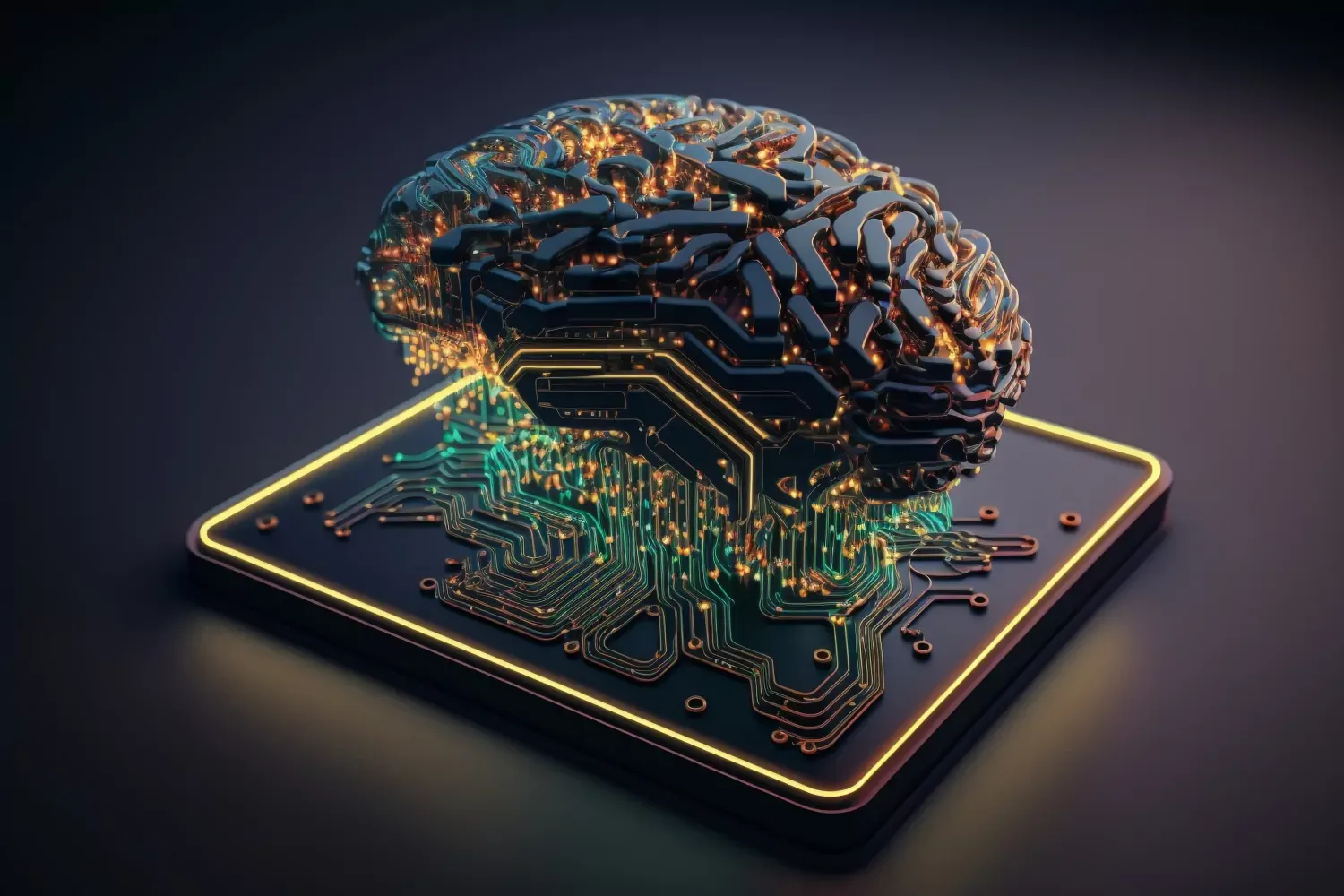
Key Features:
- Neural Networks: At the core of deep learning are neural networks, which consist of interconnected layers of nodes (neurons) that process input data. Each layer transforms the data, allowing the network to learn complex representations.
- Training Process: Deep learning models are trained using large datasets. During training, the model adjusts its parameters through a process called backpropagation, minimizing the difference between predicted and actual outputs.
- Feature Learning: Unlike traditional machine learning, where features must be manually extracted, deep learning models automatically learn hierarchical features from raw data, enabling them to capture intricate patterns.
- Applications: Deep learning has revolutionized various fields, including:
- Computer Vision: Image recognition, object detection, and image generation.
- Natural Language Processing: Language translation, sentiment analysis, and chatbots.
- Speech Recognition: Converting spoken language into text.
- Healthcare: Disease diagnosis and medical imaging analysis.
Relationships Between GPUs and Deep Learning
The relationship between GPUs and deep learning is crucial and can be summarized in the following aspects:
- Parallel Computing Capability: GPUs can handle a large number of computing tasks simultaneously, making them particularly efficient for matrix operations involved in deep learning. Deep learning models often require extensive linear algebra computations, and the parallel processing power of GPUs can significantly accelerate training speed.
- High Bandwidth Memory: GPUs are typically equipped with high-speed memory (such as GDDR6), allowing for rapid data reading and writing, which is essential for handling large-scale datasets in deep learning.
- Optimized Libraries and Frameworks: Many deep learning frameworks (such as TensorFlow and PyTorch) are optimized for GPUs, providing GPU acceleration features that make it easier for developers to leverage GPUs for model training.
- Energy Efficiency: For the same computing tasks, GPUs are usually more energy-efficient than CPUs, which is particularly important for large-scale deep learning training.
- Support for Large-Scale Models: As the complexity and number of parameters in models increase, the powerful computing capabilities of GPUs make it possible to train large deep learning models.
Our Picks of the Best GPU for Deep Learning
NVIDIA GeForce RTX 4090
Pros
- 512 fourth-generation Tensor cores for AI tasks
- 24GB of VRAM
- 1,008GB/s of bandwidth
- 16384 CUDA cores for significant computing power
- Watercooled for thermal performance
- supporting DLSS for better visual quality
- real-time ray tracing technology
Cons
- 450W power requirement
- Need a large case to fit the radiator

NVIDIA GeForce RTX 3090
Pros
- 328 third-generation Tensor cores
- 24GB of VRAM
- 936.2 GB/s of bandwidth
- 10496 CUDA cores
- Large heatsink with three fans
Cons
- Three slot thickness
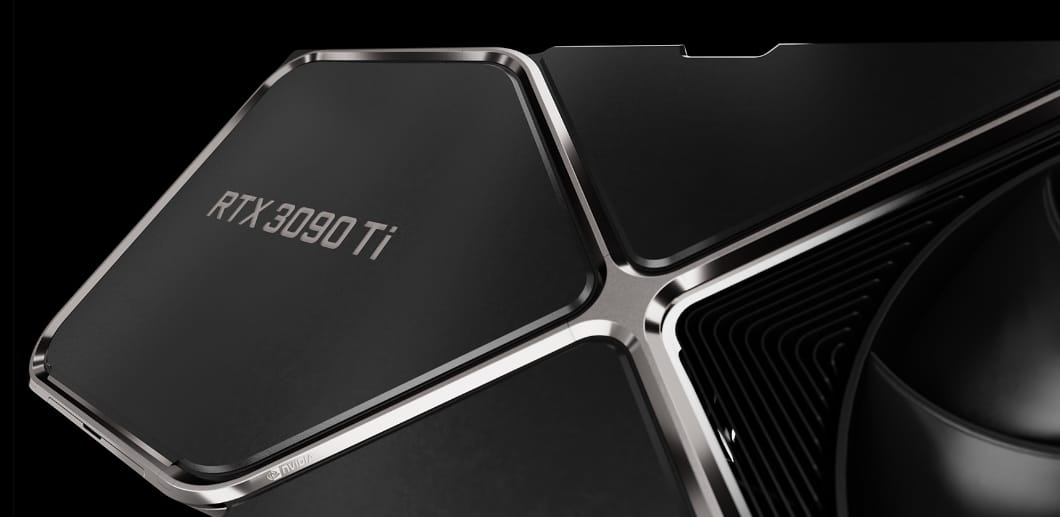
Nvidia Tesla V100
Pros
- 16GB of VRAM
- 640 first-generation Tensor cores
- Relatively low 350W power requirement
Cons
- No active cooling
- No display outputs
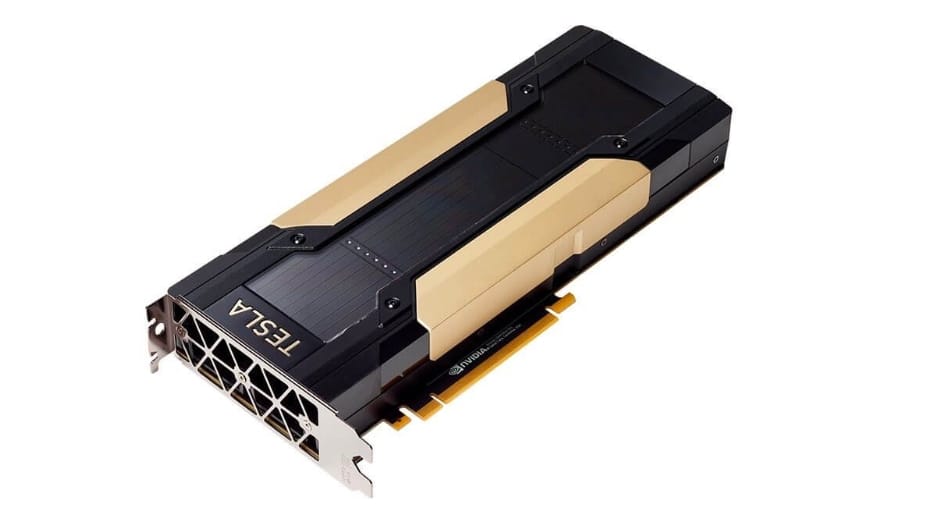
NVIDIA A6000
- a beast for deep learning tasks
- 10,752 CUDA cores
- 336 tensor cores
- a whopping 48GB of GDDR6 memory
- an impressive memory bandwidth of 768 GB/s
- perfect for all sorts of AI stuff
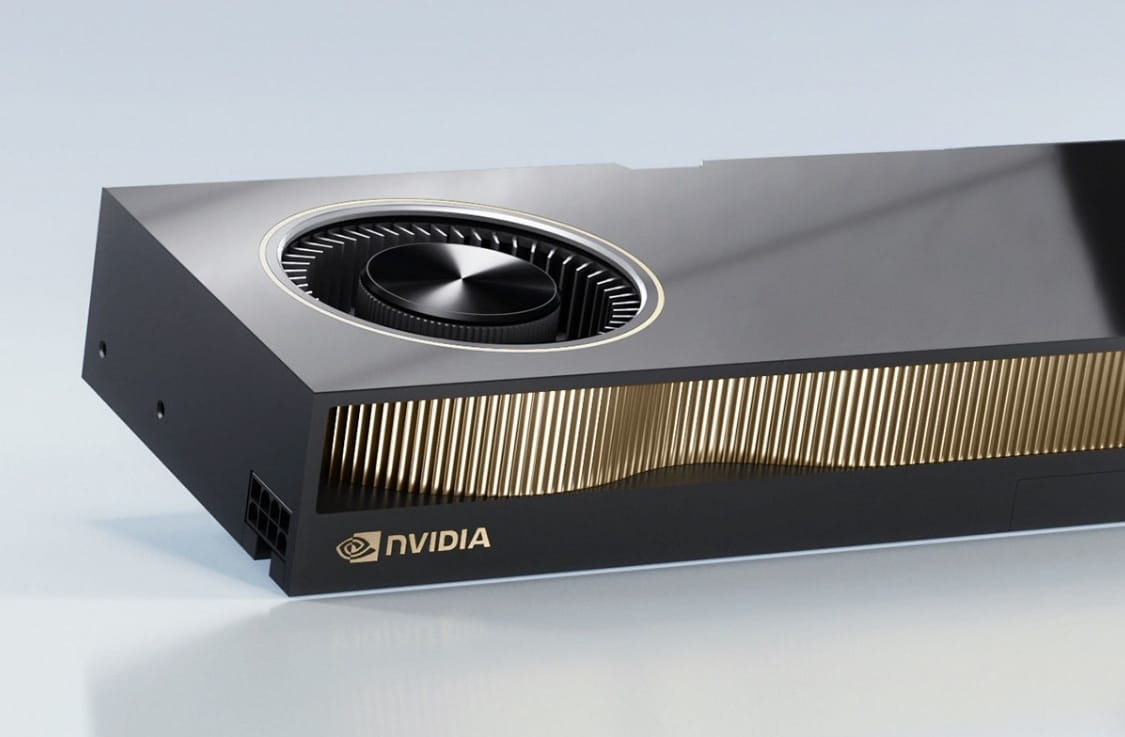
NVIDIA A100
- a top-notch GPU made for tackling deep learning and AI tasks
- 6,912 CUDA cores
- 432 tensor cores
- a whopping 80GB of HBM2e memory
- move data super fast, up to 2TB/s
- smoothly manage huge amounts of data
- well on cloud platforms
What benefits can you get from renting GPU in GPU cloud?
- Cost-Effectiveness: Utilizing cloud services reduces initial investment costs, as users can select instance types tailored to their workloads, optimizing costs accordingly.
- Scalability: Cloud services allow users to rapidly scale up or down resources based on demand, crucial for applications that need to process large-scale data or handle high concurrency requests.
- Ease of Management: Cloud service providers typically handle hardware maintenance, software updates, and security issues, enabling users to focus solely on model development and application.

Novita AI GPU Instance: Harnessing the Power of NVIDIA Series
As you can see, those NVIDIA series are indeed good GPUs for you to choose. But what if you may consider how to get GPUs with better performance, here is an excellent way — — try Novita AI GPU Instance!
Novita AI GPU Instance, a cloud-based solution, stands out as an exemplary service in this domain. This cloud is equipped with high-performance GPUs like NVIDIA A100 SXM and RTX 4090. This is particularly beneficial for PyTorch users who require the additional computational power that GPUs provide without the need to invest in local hardware.
Novita AI GPU Instance has key features like:
- GPU Cloud Access: Novita AI provides a GPU cloud that users can leverage while using the PyTorch Lightning Trainer. This cloud service offers cost-efficient, flexible GPU resources that can be accessed on-demand.
- Cost-Efficiency: Users can expect significant cost savings, with the potential to reduce cloud costs by up to 50%. This is particularly beneficial for startups and research institutions with budget constraints.
- Instant Deployment: Users can quickly deploy a Pod, which is a containerized environment tailored for AI workloads. This streamlined deployment process ensures developers can start training their models without any significant setup time.
- Customizable Templates: Novita AI GPU Instance comes with customizable templates for popular frameworks like PyTorch, allowing users to choose the right configuration for their specific needs.
- High-Performance Hardware: The service provides access to high-performance GPUs such as the NVIDIA A100 SXM, RTX 4090, and A6000, each with substantial VRAM and RAM, ensuring that even the most demanding AI models can be trained efficiently.
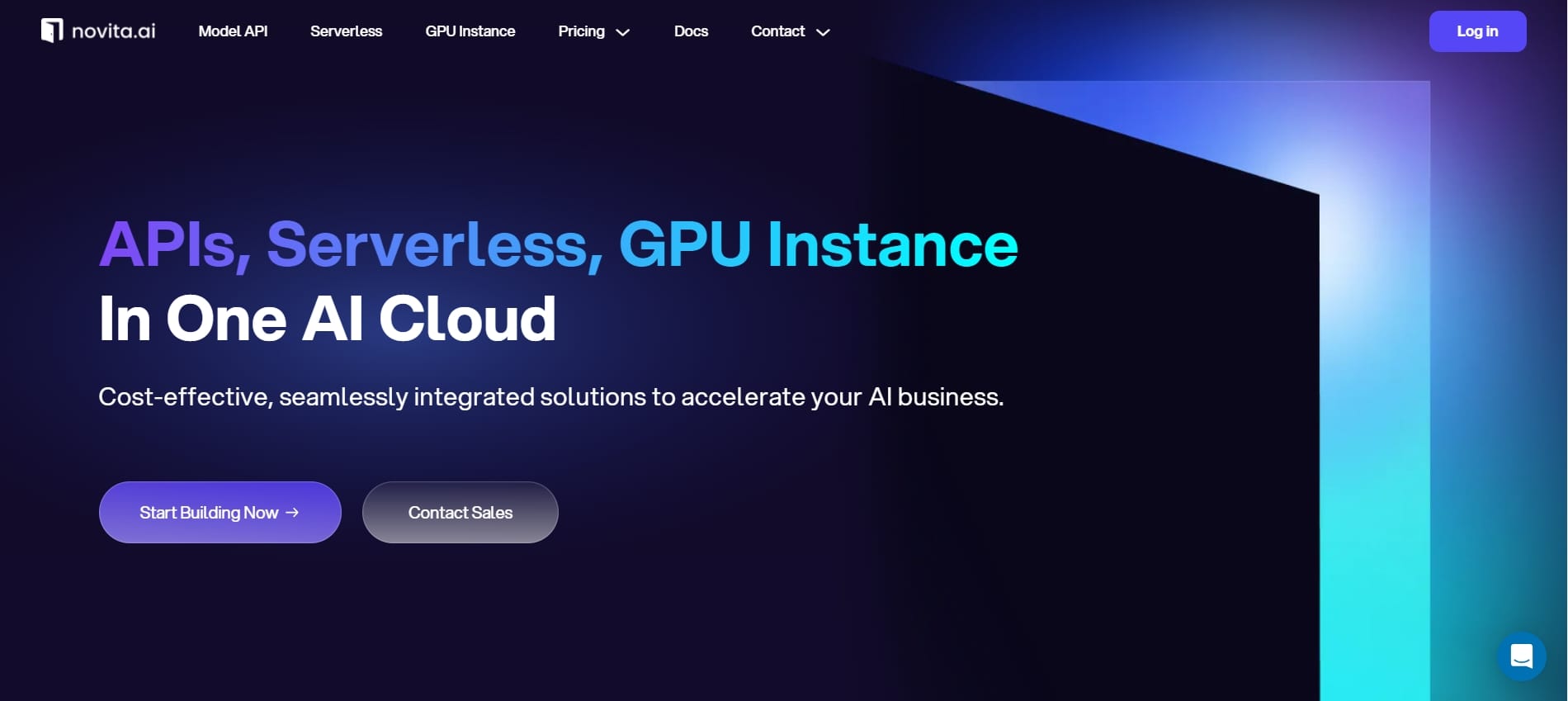
Rent NVIDIA GeForce RTX 4090 in Novita AI GPU Instance
When you are deciding which GPU to buy and considering both its function and price of it, you can choose to rent it in our Novita AI GPU Instance! Let's take renting NVIDIA GeForce RTX 4090 for example:
- Price:
When buying a GPU, the price may be higher. However, renting GPU in GPU Cloud can reduce your costs greatly for it charging based on demand.Just like NVIDIA GeForce RTX 4090, it costs 0.74 dollars per hour, which is charged according to the time you use it, saving a lot when you don't need it.
- Function:
Don't worry about the function! Users can also enjoy the performance of a separate GPU in the Novita AI GPU Instance.The same features:
- 24GB VRAM
- 134GB RAM 16vCPU
- Total Disk: 289GB
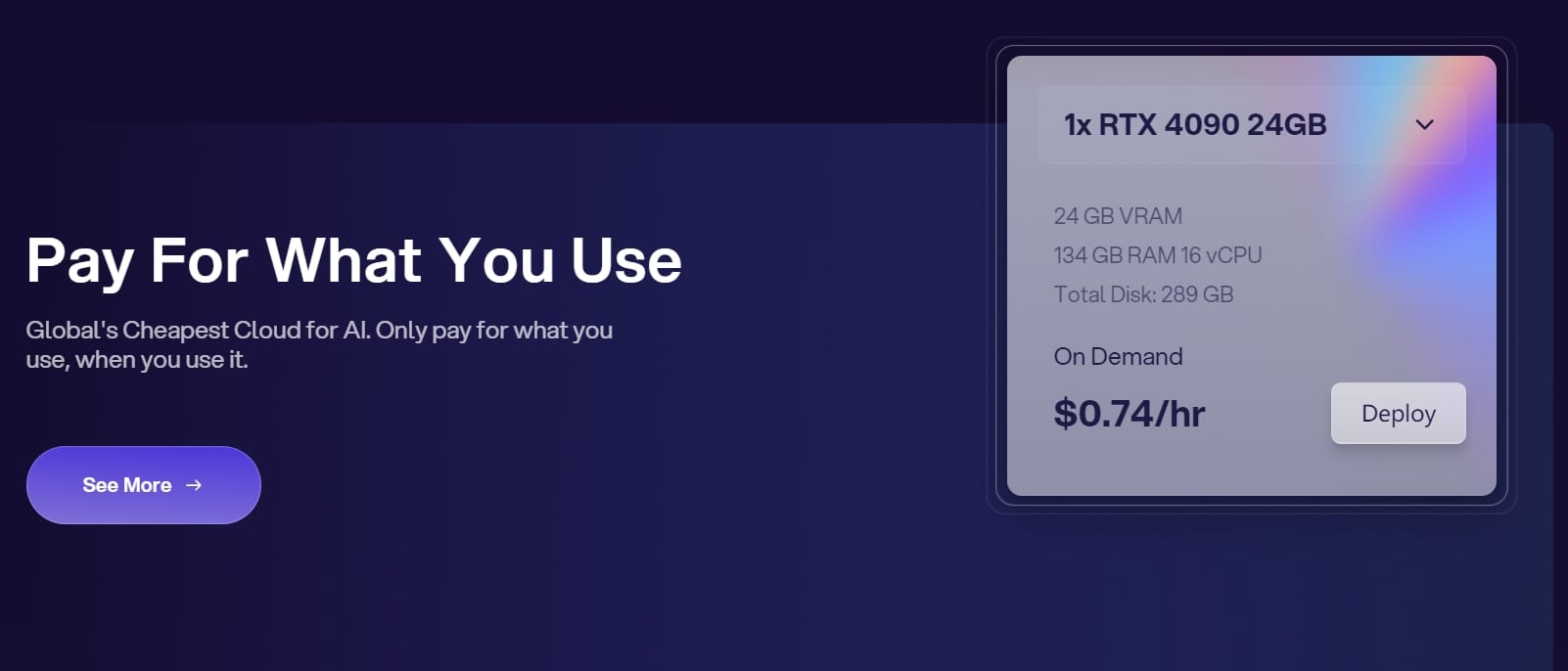
Conclusion
In conclusion, selecting the best GPU for deep learning in 2024 is a decision that hinges on several factors, including computational power, memory capacity, power efficiency. As technology advances rapidly, it's crucial to consider the latest generations of GPUs from leading manufacturers like NVIDIA series. NVIDIA, with its continued dominance in the AI and deep learning space, is likely to offer GPUs that balance high performance with optimized software support, such as CUDA and TensorRT, for seamless integration into popular frameworks.
However, you may fall into confused for you don't know which one to choose. Therefore, rent GPUs in GPU cloud like Novita AI GPU Instance is a good choice for you to avoid having trouble choosing the best one and instead of buying the whole hardware.
Frequently Asked Questions
Which GPU is better for beginners in deep learning, A6000 or A100?
If you're just starting out with deep learning, going for the NVIDIA A6000 is a smart move. It's more budget-friendly but still gives you performance that can stand up to the A100.
Is NVIDIA A100 better than NVIDIA RTX A6000 for stable diffusion?
Indeed, when it comes to stable diffusion, the NVIDIA A100 outshines the RTX A6000. With its more advanced architecture and greater memory bandwidth, the A100 can create high-quality images much faster than what you'd get with the A6000.
How does cloud GPU renting work for gaming?
Renting a Cloud GPU is like having access to top-notch gaming gear without the need to spend a lot of money on it. With this setup, gamers can play their favorite games smoothly by connecting to powerful graphics processors over the internet.
Novita AI, is the All-in-one cloud platform that empowers your AI ambitions. Integrated APIs, serverless, GPU Instance - the cost-effective tools you need. Eliminate infrastructure, start free, and make your AI vision a reality.
Recommended Reading: